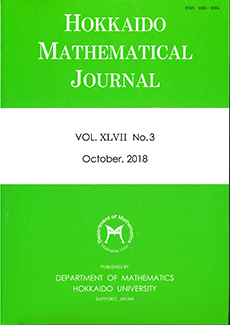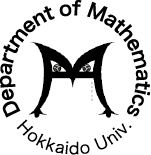Abstract
If $x,y,z$ are real numbers satisfying $x+y+z=1$, then the maximum of the quadratic form $axy+bxz+cyz$ with positive constants $a,b,c$ is $$\displaystyle{\frac{abc}{2ab+2ac+2bc-a^2-b^2-c^2}}$$ under the assumption $\sqrt{a}<\sqrt{b}+\sqrt{c}$. Extending this fact, we give the maximum of the quadratic form $\displaystyle\sum_{1 \le i< j \le n} a_{ij}x_i x_j$ in $n$-variables $x_1,\ldots,x_n$ satisfying $\displaystyle\sum_{i=1}^{n} x_i = 1$ with constants $a_{ij} \ge 0$ under certain assumptions.
Citation
Saichi IZUMINO. Noboru NAKAMURA. "Maximization of quadratic forms expressed by distance matrices." Hokkaido Math. J. 35 (3) 641 - 658, August 2006. https://doi.org/10.14492/hokmj/1285766422
Information





